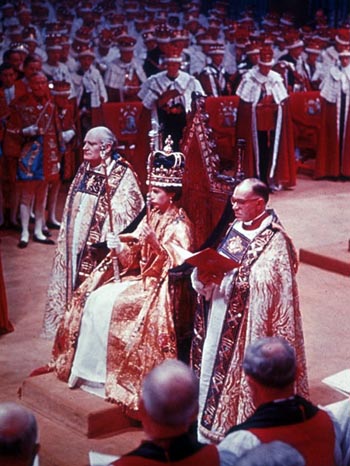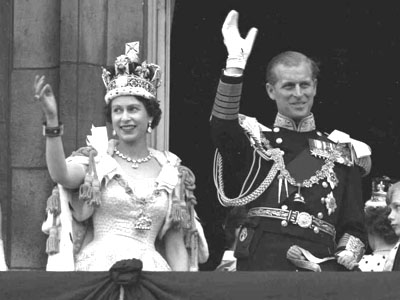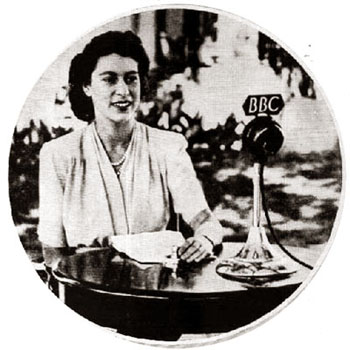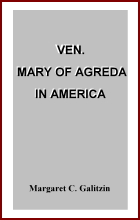Ambiences and Tendencies
 |
 |
 |
 |
 |
 |
 |
The Role of Symbols,
Pomp & Richness in Life
Given the miserablist onslaught by Pope Francis against the monarchical and aristocratic symbols of the Church, it appears opportune for TIA to publish some comments by Prof. Plinio on similar attacks made against the English Monarchy in 1957. Although the details are different in the attacks to both temporal and spiritual monarchies, the principles that support them are the same and may be applied today as well. TIA
The moment has arrived for us to say something about the critique of Queen Elizabeth made by Lord Altrincham and the British press. [He argued that the Queen’s court was too upper-class and British, and advocated a more “classless” court.]
 By the very nature of the criticism the young Sovereign suffered, our comments fit in this section titled Ambiences, Customs and Civilizations in the monthly Catolicismo, since it normally addresses this kind of topics.
By the very nature of the criticism the young Sovereign suffered, our comments fit in this section titled Ambiences, Customs and Civilizations in the monthly Catolicismo, since it normally addresses this kind of topics.
In short, Lord Altrincham and his cohorts attacked Elizabeth II by affirming that her presentation, her way of being and the aristocratic tone of the English court are incompatible with the idea that our century has of a Queen.
What should one think of this?
Either that the critique of Lord Altrincham is astoundingly superficial or fundamentally insincere. For if our century is so egalitarian that the finest traditions of the monarchical and aristocratic past cannot survive, then the monarchy itself no longer has reason to exist.
What Altrincham called for was, at depth, the transformation of the monarchy into a petty bourgeois institution. He would like Elizabeth II to be dressed, not as Queen of England, but like a suburban beauty queen, able to appear alongside Khrushchev and Bulganin at official ceremonies without too much dissonance.
If he did not realize this, then his words were superficial. If he realized it, then he was insincere when he formulated his critique as a monarchist. Because his words reflected an essentially anti-monarchical egalitarianism.
Enough about Altrincham. He does not deserve any more of our time.
*
Now let us examine the merit of the topic. Is it true that the English monarchical ceremonial is anachronistic and should be made more plebian?
The question is poorly formulated. One should act, not according to the whims of this or that century, but according to the order placed by God in Creation.
Providence placed in nature beautiful and precious materials so that human creativity, rightly moved by a desire for beauty and perfection, would produce jewels, velvets, silks – in short, everything that serves to ornament man and life.
To imagine an order of things - whatever be the form of government - where all this were to be proscribed as bad, would be to reject the precious gifts given for the moral perfection of mankind.
On the other hand, God gave man the opportunity to express by gestures, rituals and ceremonials the high sense of his own nobility or the sublimity of spiritual or temporal government functions that man is sometimes called to perform. Hence, this justifies luxury and pomp as natural elements of the life of a civilized people.
These decorative resources were made to adorn tradition, the legitimate power and the authentic social values, and not to be the privilege of upstarts and the nouveaux-riches who flaunt their opulence – for which nothing prepared them – at nightclubs, casinos or sumptuous hotels. Much less should such items be locked up in museums as incompatible with the functional simplicity and gloomy judiciousness of a more or less sovietized society.
Understood in this way, these decorative elements have in their essence an admirable cultural, didactic and practical function of the utmost importance for the common good.
*
 On the balcony, the Queen, the Duke of Edinburgh and their two children present themselves to the applause of the multitude. Centuries of taste, refinement, power and wealth patiently prepared these magnificent jewels, this noble attire, that perfect stylization of gestures and physiognomic expressions.
On the balcony, the Queen, the Duke of Edinburgh and their two children present themselves to the applause of the multitude. Centuries of taste, refinement, power and wealth patiently prepared these magnificent jewels, this noble attire, that perfect stylization of gestures and physiognomic expressions.
Considering just convenience of body, it is quite possible that the Queen would find it more comfortable to be knitting in a dressing gown and slippers, the Duke to be in a pool, and the children playing on the garden lawn. But they understand that they can only do these things in private. It can be appropriate, for example, for a shepherd to do such things before his irrational flock, but not for a head of State to gain the respect of an intelligent people. It is enough for animals to use a stick and give them grass. For men, what is needed are beliefs and principles and, consequently, the symbols that express them.
When the Royal Family appears on the balcony, it symbolizes the doctrine of the divine origin of power, the greatness of their nation, and the valor of English intelligence, taste and culture. The multitudes applaud. From around the world come people who want to contemplate this manifestation of the greatness of England. And, at the end, everyone leaves, saying: "What a great institution! What a grand culture! What a great country!"
*
Here, in our second picture, Elizabeth is wearing common clothing. Imagine if thenceforth she would present herself only like this to the people. Who would come to see her? And seeing her, who would think of the glory of England?
Of the few who would come to see her, almost all would think, “What a nice young lady.” Veiled by the banality of everyday clothing, the high refinement and authentic distinction of the Queen would not be noticed by most. She would be noticed no more than the nice girls that fill the streets, plazas, cinemas, buses and subways.
*
How admirable, legitimate and profound is the power of symbols! Those who deny it are the ones who do not have the intelligence to understand it. Or they are the ones who want to destroy the higher realities that these symbols express. And woe to the country - whatever be the form of government, we repeat – where the public is led astray by vulgar demagogues who deify triviality and sympathize only with what is banal, inexpressive and common.


Lord Altrincham criticized the pomp and ceremony of the young Queen's court
In short, Lord Altrincham and his cohorts attacked Elizabeth II by affirming that her presentation, her way of being and the aristocratic tone of the English court are incompatible with the idea that our century has of a Queen.
What should one think of this?
Either that the critique of Lord Altrincham is astoundingly superficial or fundamentally insincere. For if our century is so egalitarian that the finest traditions of the monarchical and aristocratic past cannot survive, then the monarchy itself no longer has reason to exist.
What Altrincham called for was, at depth, the transformation of the monarchy into a petty bourgeois institution. He would like Elizabeth II to be dressed, not as Queen of England, but like a suburban beauty queen, able to appear alongside Khrushchev and Bulganin at official ceremonies without too much dissonance.
If he did not realize this, then his words were superficial. If he realized it, then he was insincere when he formulated his critique as a monarchist. Because his words reflected an essentially anti-monarchical egalitarianism.
Enough about Altrincham. He does not deserve any more of our time.
Now let us examine the merit of the topic. Is it true that the English monarchical ceremonial is anachronistic and should be made more plebian?
The question is poorly formulated. One should act, not according to the whims of this or that century, but according to the order placed by God in Creation.
Providence placed in nature beautiful and precious materials so that human creativity, rightly moved by a desire for beauty and perfection, would produce jewels, velvets, silks – in short, everything that serves to ornament man and life.
To imagine an order of things - whatever be the form of government - where all this were to be proscribed as bad, would be to reject the precious gifts given for the moral perfection of mankind.
On the other hand, God gave man the opportunity to express by gestures, rituals and ceremonials the high sense of his own nobility or the sublimity of spiritual or temporal government functions that man is sometimes called to perform. Hence, this justifies luxury and pomp as natural elements of the life of a civilized people.
These decorative resources were made to adorn tradition, the legitimate power and the authentic social values, and not to be the privilege of upstarts and the nouveaux-riches who flaunt their opulence – for which nothing prepared them – at nightclubs, casinos or sumptuous hotels. Much less should such items be locked up in museums as incompatible with the functional simplicity and gloomy judiciousness of a more or less sovietized society.
Understood in this way, these decorative elements have in their essence an admirable cultural, didactic and practical function of the utmost importance for the common good.

The Queen and Duke Edinburgh after the coronation in 1953
Considering just convenience of body, it is quite possible that the Queen would find it more comfortable to be knitting in a dressing gown and slippers, the Duke to be in a pool, and the children playing on the garden lawn. But they understand that they can only do these things in private. It can be appropriate, for example, for a shepherd to do such things before his irrational flock, but not for a head of State to gain the respect of an intelligent people. It is enough for animals to use a stick and give them grass. For men, what is needed are beliefs and principles and, consequently, the symbols that express them.
When the Royal Family appears on the balcony, it symbolizes the doctrine of the divine origin of power, the greatness of their nation, and the valor of English intelligence, taste and culture. The multitudes applaud. From around the world come people who want to contemplate this manifestation of the greatness of England. And, at the end, everyone leaves, saying: "What a great institution! What a grand culture! What a great country!"

Of the few who would come to see her, almost all would think, “What a nice young lady.” Veiled by the banality of everyday clothing, the high refinement and authentic distinction of the Queen would not be noticed by most. She would be noticed no more than the nice girls that fill the streets, plazas, cinemas, buses and subways.
How admirable, legitimate and profound is the power of symbols! Those who deny it are the ones who do not have the intelligence to understand it. Or they are the ones who want to destroy the higher realities that these symbols express. And woe to the country - whatever be the form of government, we repeat – where the public is led astray by vulgar demagogues who deify triviality and sympathize only with what is banal, inexpressive and common.

Translated from Catholicismo n. 82, October 1957
Posted June 10, 2013
Posted June 10, 2013
______________________
______________________








